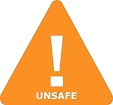Kali Bichromicum | Kali Bichr Tablet while Breastfeeding

What is Kali Bichromicum | Kali Bichr Tablet used for?
Kali Bichromicum | Kali Bichr Tablet while breastfeeding safe or not? Can there be any side effects for infant while using it during breastfeeding?

Note: Due to high dilution of active ingredients in homeopathic medicines most homeopathic medicines are safe while breastfeeding.
Kali Bichromicum | Kali Bichr Tablet Breastfeeding Analsys
Potassium dichromate while Breastfeeding
UnsafeCAS Number: 7778-50-9
Así como el Cromo (véase ficha) en estado trivalente (3+) y a dosis apropiadas carece de toxicidad y constituye un oligoelemento nutricional esencial, las sales hexavalentes (6+) de cromo tienen usos industriales (cromado), son oxidantes, corrosivas, irritantes, están catalogadas como carcinogenos 1A y mutágenos 1B (INSHT 2012, ATSDR 2012), pueden causar dermatitis de contacto y toxicidad crónica y aguda grave.El cromo 6+ se encuentra también en el humo de combustión del tabaco, en cosméticos (Hepp 2014) y en algunas prótesis osteoarticulares (Oppermann 2015). Los compuestos de cromo exavalente, por su peligrosidad, no tienen actualmente usos médicos. A nivel de riesgo laboral para la madre lactante, las frases (INSHT 2008) de riesgo (antiguas frases R, actualmente frases H de Hazard, peligro) o de prudencia (frases P) que deben aparecer en la ficha de seguridad de un producto son sólo dos:- H362 (ant. R64): "Puede perjudicar a los niños alimentados con leche materna"- P263: "Evitar el contacto durante el embarazo y la lactancia"Otras tres frases que se deben considerar durante la lactancia tienen relación con el poder cancerígeno, mutagénico o acumulativo de un producto:- H351 (ant. R40): "Posibles efectos cancerígenos" - H371 (ant. R68): "Posibilidad de efectos irreversibles" - H373 (ant. R33): "Peligro de efectos acumulativos" Basándose en la ausencia de estas frases en las fichas de seguridad del trióxido de cromo (Panreac 2012, INSHT 2005), no sería preciso apartar a la madre lactante de su puesto de trabajo, bastándole a la empresa con cumplir las exigencias legales de valores máximos de exposición ambiental y a la trabajadora las normas aconsejadas de prudencia (guantes, lavado de manos, cambio de ropa, etc. (Panreac 2012). Pero según la normativa europea vigente (Reglamento CE 2008) cuando un producto es carcinógeno y mutágeno, las madres lactantes trabajadoras no deben estar expuestas a mezclas, sean de sólidos, líquidos o gases, con límites de concentración superiores a 0,3%.Además resulta un anomalía el que estando clasificado como cancerígeno 1A, no se le aplique la frase H351 (R40). A la luz de toda la bibliografía, consideramos que la madre lactante no debería estar expuesta a compuestos hexavalentes de cromo en el ambiente laboral.
What should I do if already breastfed my kid after using Kali Bichromicum | Kali Bichr Tablet?
Homeopathic medicines usually do not cause harmful effects on breastfed babies. Kali Bichromicum | Kali Bichr Tablet is a homeopathic medicine and if your baby does not have any abnormal symptoms then there is nothing to worry about. Some homeopathic medicines contain alcohol (ethanol) and such homeopathic medicines in high dosage can have bad effect on development of baby.
I am nursing mother and my doctor has suggested me to use Kali Bichromicum | Kali Bichr Tablet, is it safe?
Homeopathic medicines are usually safe in breastfeeding and if Kali Bichromicum | Kali Bichr Tablet has been recommended by doctor then there should be no doubt about its usage in breastfeeding.
If I am using Kali Bichromicum | Kali Bichr Tablet, will my baby need extra monitoring?
Not really.
Who can I talk to if I have questions about usage of Kali Bichromicum | Kali Bichr Tablet in breastfeeding?
US
National Womens Health and Breastfeeding Helpline: 800-994-9662 (TDD 888-220-5446) 9 a.m. and 6 p.m. ET, Monday through Friday
UK
National Breastfeeding Helpline: 0300-100-0212 9.30am to 9.30pm, daily
Association of Breastfeeding Mothers: 0300-330-5453
La Leche League: 0345-120-2918
The Breastfeeding Network supporter line in Bengali and Sylheti: 0300-456-2421
National Childbirth Trust (NCT): 0300-330-0700
Australia
National Breastfeeding Helpline: 1800-686-268 24 hours a day, 7 days a week
Canada
Telehealth Ontario for breastfeeding: 1-866-797-0000 24 hours a day, 7 days a week
